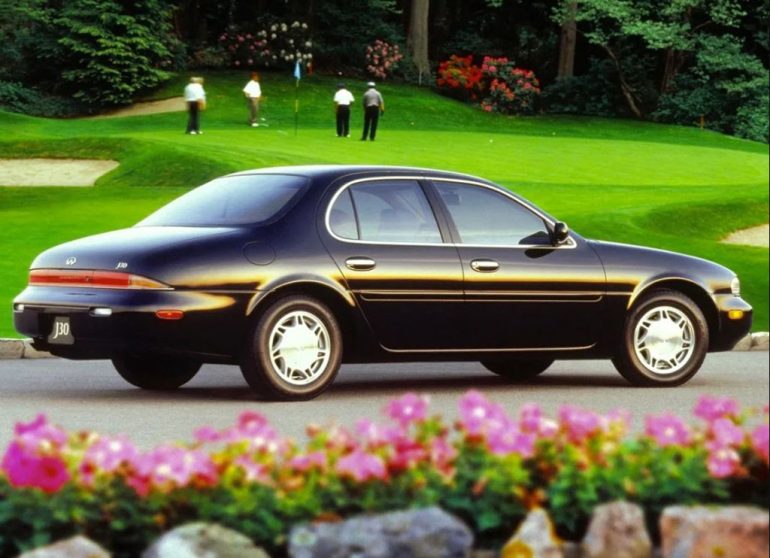
Infiniti has a reputation for pushing boundaries yet has had its challenges. As the brand celebrates its 35th anniversary, it’s worth revisiting one of its most daring creations—the J30 sedan. Launched in 1992, the J30 was Infiniti’s answer to the boxy sedans dominating the market. With its unconventional design and innovative marketing, it still stands as a testament to the brand’s forward-thinking philosophy.
Infiniti designed the J30 to challenge the design norms of the early ’90s. At a time when angular sedans were the standard, Infiniti’s team set out to create something different. They described their goal as breaking free from the “tyranny of the wedge”—a direct challenge to the sharp, box-like structures prevalent at the time.
Also, don’t forget that you can get discounted new car pricing with a free quote through qualified local dealer partners.

The J30’s design was fluid, featuring rounded curves that contrasted sharply with its competitors. This decision was meant to create a personal luxury sedan that reflected, rather than defined, the personality of its owner. The sleek exterior was meant to capture attention without being overly aggressive, offering a more sophisticated aesthetic to buyers.

Infiniti’s marketing strategy for the J30 was as unique as the car itself. Before the sedan hit the showrooms, potential buyers were sent a free VHS cassette titled A Curious Journey. This unusual approach introduced the J30 as more than just a car—it was an experience. Along with the video, customers received an invitation for a “personal guest drive,” emphasizing the personal connection Infiniti wanted drivers to feel with the vehicle.
The J30 also marks a key moment in the career of Alfonso Albaisa, now Senior Vice President of Global Design at Infiniti. The sedan was the first full-model design program he worked on from start to finish. Tasked with refining the front and rear designs, Albaisa brought fresh perspectives to the project.

One of the most controversial elements was the rear of the car. Drawing inspiration from his work on a luxury yacht project, Albaisa applied a similar design philosophy to the J30. The result was a rounded, almost sculptural rear end that set the J30 apart from anything else on the road at the time.

Albaisa’s involvement with the J30’s design was heavily influenced by his work on a luxury yacht called Motali. He recalls sketching arched lines on the yacht, which led his studio director to suggest applying the same concept to the J30’s rear. This influence can be seen in the J30’s distinctive, tapering rear design, which was a departure from the straight lines typical of sedans in the early ‘90s.
The Motali, a 33-meter yacht, was designed to be as visually striking from the rear as it was from the front—much like the J30. The yacht’s curved, inward-tapering stern helped Albaisa create a similar look for the J30, resulting in a rear-end design unlike anything else at the time.

Though the J30 was only in production from 1992 to 1997, its influence on Infiniti’s design language remains significant. The car embodied Infiniti’s desire to blend natural beauty with automotive design, a principle that still shapes the brand’s philosophy today.

The J30’s daring spirit, influenced by both automotive and nautical design, continues to resonate. As Infiniti celebrates 35 years, the J30 serves as a reminder of the brand’s willingness to innovate and defy conventions.

Infiniti’s 35-year journey is filled with moments where the brand took risks and explored new design territories. The J30, with its sleek curves and bold marketing, exemplified this ethos. While it may have been a short-lived model, the J30’s impact on automotive design—particularly for Infiniti—remains. As we celebrate Infiniti’s milestone, the J30 deserves its place as a symbol of the brand’s commitment to innovation and unique style.